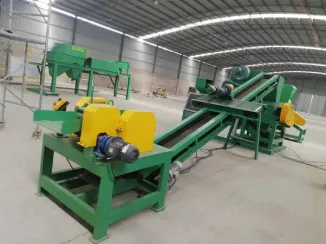

Lis . 01, 2024 10:21 Back to list
How Does an Eddy Current Separator Work?
Eddy current separators are specialized devices used in recycling and waste management industries to separate non-ferrous metals from other materials. Understanding the workings of an eddy current separator involves familiarizing oneself with basic principles of electromagnetism and material properties.
How Does an Eddy Current Separator Work?
When a conductive non-ferrous metal enters the magnetic field, it experiences a phenomenon known as electromagnetic induction. This leads to the generation of eddy currents within the metal itself. These eddy currents create their own magnetic field, which opposes the original magnetic field created by the rotor, causing the metal pieces to be expelled from the main material flow. This expulsion occurs in a specific direction, effectively separating the non-ferrous metal from other materials such as plastics, glass, and ferrous metals.

The separator's efficiency relies heavily on several factors, including the speed of the conveyor belt, the type of material being processed, and the design of the rotor. Proper calibration of these parameters ensures the best possible separation efficiency. Additionally, the design may include adjustable settings that allow operators to fine-tune the system based on the specific materials being processed.
Eddy current separators are widely used due to their effectiveness and versatility. They can process a range of materials, from electronic waste to construction debris. In the recycling industry, they play a crucial role in recovering valuable metals, thereby reducing waste sent to landfills and contributing to a more sustainable environment.
In summary, eddy current separators are essential tools in modern waste management, employing the principles of electromagnetism to efficiently separate non-ferrous metals from mixed material streams. Their ability to recover valuable resources not only supports recycling efforts but also promotes environmental sustainability by reducing the need for virgin raw materials. As technology progresses, we can expect further advancements in eddy current separation methods, enhancing efficiency and effectiveness in material recovery processes.
Latest news
Troubleshooting Common Eddy Separator Problems
NewsJul.04,2025
The Role of Metal Recycling Plants in Circular Economy
NewsJul.04,2025
The Impact of Recycling Line Pickers on Waste Management Costs
NewsJul.04,2025
Safety Features Every Metal Shredder Should Have
NewsJul.04,2025
How Industrial Shredders Improve Waste Management Systems
NewsJul.04,2025
How Cable Granulators Contribute to Sustainable Recycling
NewsJul.04,2025